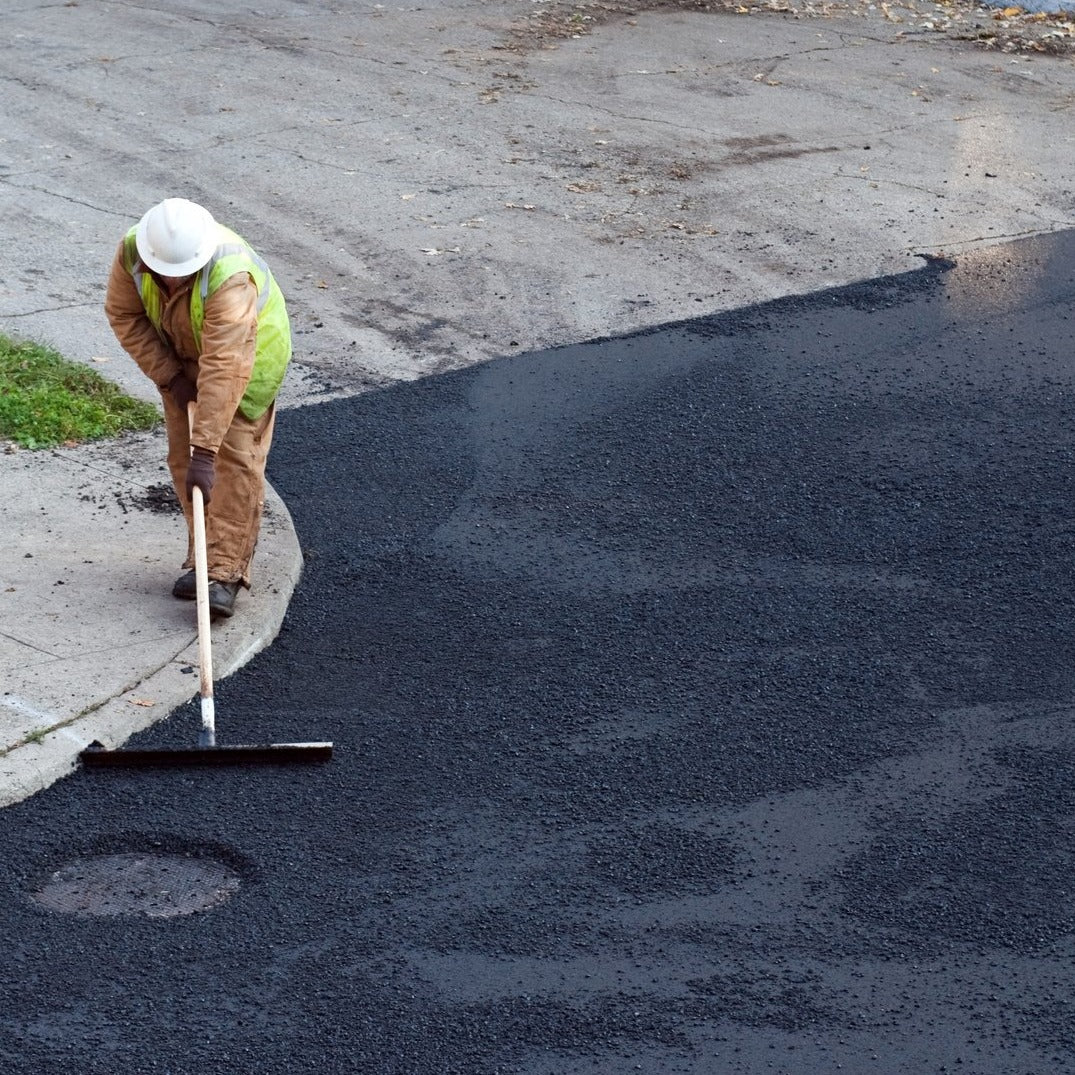Elevate the Look and Feel of Your Residential Or Commercial Property with Expert Commercial Parking Lot Paving
Opening the Tricks of Hot Mix Asphalt Modern Technology
Exploring the midsts of warm mix asphalt innovation reveals a globe where specific formulas and precise procedures assemble to shape our roadways and infrastructure. The blend of fillers, accumulations, and binders isn't merely a building job yet a critical orchestration of longevity and effectiveness.
Importance of Hot Mix Asphalt
Warm Mix Asphalt plays a vital role in contemporary framework development as a result of its toughness and cost-effectiveness. As one of the most commonly utilized leading material for roads, highways, and car park, Warm Mix Asphalt offers a variety of benefits that add to its significance in building tasks. One vital advantage is its ability to withstand heavy website traffic tons and rough climate condition, giving a resilient and trusted surface area for transport networks. In Addition, Hot Mix Asphalt is affordable in both preliminary building and construction and long-lasting maintenance, making it a favored option for lots of framework tasks.
The toughness of Hot Mix Asphalt stems from its make-up, which includes accumulations, binder, and filler materials that are carefully chosen and mixed to meet particular performance demands. In general, the importance of Warm Mix Asphalt in facilities advancement can not be understated, as it proceeds to be a cornerstone of modern-day construction practices.
Elements of Asphalt Mixes
The composition of asphalt blends contains meticulously chosen aggregates, binder, and filler products that are vital for achieving details performance requirements. Accumulations are the primary element of asphalt blends, offering stamina and stability. These accumulations can be natural, such as gravel or smashed rock, or synthetic, like recycled products from old pavements. The binder, normally asphalt or asphalt cement, holds the accumulations together and gives flexibility and longevity to the mix. The selection of the binder is critical as it straight affects the mix's performance in different climate conditions. Fillers, such as hydrated lime or Portland concrete, are made use of to improve the mix's workability and aging resistance. Angled Parking.
The mix and percentage of these parts play a considerable function in figuring out the top quality and efficiency of the asphalt mix. Designers carefully make the mix to fulfill specific demands, taking into consideration variables like traffic volume, climate problems, and sidewalk life expectancy. Appropriate option and harmonizing of aggregates, binder, and fillers are necessary for producing durable, long-lasting asphalt pavements.
Combining and Manufacturing Methods

Once the accumulations are selected, the binder, frequently asphalt cement, is added to bind the materials together. The binder's quality and amount dramatically influence the mix's stamina, adaptability, and resistance to environmental factors. Additionally, fillers like moisturized lime or Rose city concrete may be included to enhance specific characteristics of the asphalt mix, such as its workability or moisture resistance.
Throughout manufacturing, the aggregates and binder are heated up, generally between 250-325 ° F(121-163 ° C ), to facilitate blending and make sure correct covering of the aggregates. The blending process should be comprehensive to attain an uniform mix that advertises the wanted performance characteristics of the asphalt. Numerous methods, such as set mixing or drum blending, are employed to achieve regular and high-grade asphalt blends for construction tasks.
Aspects Affecting Asphalt Performance
Aspects influencing asphalt efficiency encompass a series of variables that affect the durability, durability, and general top quality of asphalt pavements. One vital element is the top quality of materials used in the asphalt mix. The type and source of accumulations, the binder quality, and the ingredients all play a considerable role in identifying the efficiency of the asphalt sidewalk. The gradation of accumulations is essential as it impacts the mix's stability, workability, and resistance to fracturing and rutting.

Environmental problems also affect asphalt performance. Temperature level variants, wetness seepage, and traffic lots can all impact the architectural integrity of the sidewalk. Layout considerations, such as sidewalk density and drainage, are necessary in guaranteeing the lasting efficiency of the asphalt sidewalk. By thoroughly taking into consideration these elements, designers and contractors can optimize asphalt performance and improve the life span of sidewalks.
Sustainable Practices in Asphalt Technology

WMA allows for the manufacturing and placement of asphalt mixes at reduced temperatures contrasted to conventional hot-mix asphalt, resulting in decreased power consumption and greenhouse gas exhausts. The use of permeable asphalt blends can help alleviate stormwater runoff problems by enabling water to penetrate via the pavement and right into the ground, promoting all-natural water purification and recharge processes.
Verdict
In verdict, hot mix asphalt technology plays a critical role in modern infrastructure development due to its sturdiness and cost-effectiveness. By meticulously stabilizing components, employing proper mixing techniques, and considering various variables, designers can develop high-quality asphalt mixes that withstand heavy traffic loads and severe weather. Embracing sustainable techniques, such as using warm-mix technologies and recycled materials, even more enhances the environmental friendliness of asphalt innovation.
Blending and production techniques in hot mix asphalt technology entail the specific combination and handling of aggregates, binder, and fillers to develop a sturdy and high-performance asphalt mix.Elements influencing asphalt performance incorporate a variety of variables that impact the resilience, longevity, and general quality of asphalt sidewalks. Lasting methods in asphalt innovation encompass numerous efforts aimed at reducing the ecological influence of asphalt manufacturing and paving procedures. By integrating reclaimed asphalt sidewalk (RAP) and recycled asphalt roof shingles (RAS) right into brand-new asphalt mixes, the market can considerably reduce the usage of raw materials and energy, while additionally decreasing land fill waste.
WMA allows for the production and placement of asphalt blends at reduced temperatures contrasted to conventional hot-mix asphalt, resulting in lowered energy usage and greenhouse gas emissions.